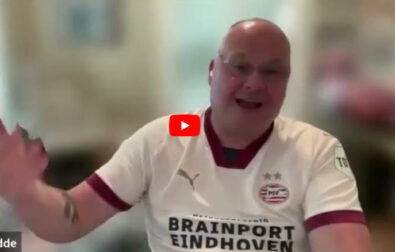Seven months after the publication of the first part of the report, which set out scientific knowledge on climate change, representatives of 195 countries have approved the second part of the IPCC’s sixth assessment report. In the new paper, researchers have concentrated on climate risks and evaluated the capacity of human societies to adapt to climate change.
What is climate risk? The IPCC defines it as the combination of an “exposure” – for example, whether I live in a flood zone – and a “vulnerability” – my house is constructed on one level and doesn’t have a higher floor where I can take refuge. To build a single-story house in a flood zone therefore constitutes a “risk”. The consequences of these climate risks can take more subtle forms, such as a decline in agricultural yields (I live in a warming region, so I am exposed; and I cultivate heat-sensitive plant varieties,so I am vulnerable), reduced fishing activity because of species migration, or restricted access to potable water due to the deterioration of infrastructure.
The aim of adaptation is to limit climate risk. The term encompasses all measures which can limit the harmful effects of climate change. For example, moving out of a flood zone or cultivating heat-resistant crops are two strategies for adapting to climate change. At the societal level, measures can be more complex: governing bodies can put in place alert systems or build protective structures to shelter infrastructure or ecosystems from climate hazards. They can encourage changes in economic activity, influence the places people choose to live, or develop more “climate-friendly” public policy.
How things stand
In 36 pages, the Summary for Policymakers provides an update on the current knowledge on climate risks. First, the findings: since the IPCC’s fifth assessment report, published in 2014, the consequences of climate change have become more severe and are now easily identifiable. For example, half of the world’s population suffered from water shortages at some point over the last year, partly as a result of climate change and extreme weather events such as floods and droughts.
Interesting article?
It was made possible by Voxeurop’s community. High-quality reporting and translation comes at a cost. To continue producing independent journalism, we need your support.
Wildlife and plant species have also suffered: half of the animals and plants studied have already moved towards more temperate climates (higher latitudes, higher altitudes in mountainous regions, or deeper into the oceans). In urban settings, heatwaves have intensified, and with them spikes in air pollution, with a greater effect on the health of city-dwellers. Climate change has negatively affected livelihoods, particularly of the poorest populations, and certain key infrastructure.
In the years to come, global warming will only amplify these developments, warn scientists, especially as certain social trends reinforce the human impact on the climate. These include an ever-expanding global population that is increasingly urban, a level of consumption that is often not sustainable, and persistent severe inequality and poverty. Climate risk is exacerbated by other crises, including soil degradation, biodiversity loss, ocean pollution, and overfishing.
In short, the situation is grim but unsurprising. However, even faced with this terrifying picture of things to come, there is a glimmer of hope. A short-lived one, admittedly, because we have a long road ahead of us, but all the same: “The scale and scope of actions to reduce climate risks […] have increased worldwide ,” write the researchers. “Individuals and households along with communities, businesses, religious groups and social movements are adapting to climate change already.” Alexandre Magnan, researcher at the Institute for Sustainable Development and International Relations (Iddri) and co-author of the report, confirms that “the good news is that we know more and more about how to fight climate change.”
But there remains a large, not to say immense, gap between what needs to be done and the current level of action. “Urgent and more ambitious action” is required, accompanied above all by “rapid and far-reaching cuts to our greenhouse gas emissions ”. “It is clear now that minor, marginal, reactive or incremental changes won’t be sufficient,” write the experts. And in order to achieve significant change, we must preserve our ecosystems.
Could nature be a lifeline?
The latest report contains an interesting new element. The climate experts insist that without the preservation, or indeed the restoration, of our environment, our capacity for adaptation to climate change will be drastically limited. There are “solid, interdependent relationships between climate, biodiversity and human society” and these are “fundamental to our [adaptation] objectives”.
The experts are referring to what is known as “ecosystem services”. The water that we drink, the air that we breathe, the cool shade of a tree – these are all “free” benefits that we receive from nature. If these are the more obvious examples, others are more subtle – but just as essential. For example, the mangrove is a wetland that acts as a buffer against advancing tides, and is often threatened by rapid urbanisation. The trees, soils and ocean that capture carbon are greatly affected by human activity. We clear the forest, deeply till the soil and disturb ocean ecosystems, running the risk of wiping out these “carbon sinks”.
“We know now that good planetary health is fundamental to a viable future for Earth’s inhabitants,” say the researchers. The objective is clear and quantifiable: “The capacity to maintain biodiversity and ensure ecosystem services on a global scale requires 30% to 50% of Earth's surface (land, freshwater and ocean) to be conserved.”
Four major risks for Europe
To develop solutions for local contexts, it is essential to know precisely what kind of risks a population faces. With this in mind, the new report “provides extensive regional information to enable Climate Resilient Development”, explain the experts.
“It was strongly requested by governments,” adds Wolfgang Cramer, researcher at the Mediterranean Institute of Marine and Terrestrial Biodiversity and Ecology (IMBE) and co-author of the second part of the sixth assessment report. “When the previous report was published, countries strongly affected by climate change criticised the lack of data precisely describing the effects on their regions,” recalls the researcher. Seven regions now have access to a detailed survey – Europe, North America, Africa, Asia, Australia, Central and South America, and Small Islands.
Four principal risks were identified for Europe: heatwaves, the loss of agricultural yields, water shortages and floods. The southern regions of Europe will experience the most severe consequences, they warn. However, if the temperature climbs more than 3°C higher than pre-industrial levels, the climate risks will be so severe that even the highest level of adaptation will be insufficient.
Beyond 3°C of warming, the lack of water will become acute in cities
From 1.5 to 3°C, the risk of death during heatwaves will be doubled, or even tripled. Above 3°C our healthcare systems will not be able to cope. Substantial loss of agricultural yield is expected for the end of the century, particularly for countries in the south of Europe. Better harvests in the north will not make up for these losses. While irrigation can be an adaptive solution if the temperature rises less than 2°C, water shortages in a climate 3°C hotter will limit this option. Moreover, water shortages will affect a third of the population in the south of Europe at +2°C and two thirds at +3°C. Beyond 3°C of warming, the lack of water will become acute in cities, in the west, centre and south of Europe. Finally, in the absence of adequate risk mitigation, the damage caused by coastal flooding will worsen by a factor of ten by the end of the century.
At present, the experts’ statement is clear: European adaptation is not sufficient. The principal obstacles are limited resources, a lack of engagement from the private sector and from citizens, insufficient mobilisation of funding, and the absence of political commitment.
Inequality and climate justice
Around 3.3 to 3.6 billion people are currently highly vulnerable to climate change, write the authors. “They are mainly located in the Arctic, in Central and South America, in Africa, in Asia and on small tropical islands,” explains Virginie Duvat, author and researcher at the Littoral, Environment and Societies (LIENS) laboratory, to Reporterre. The plight of small tropical islands is emblematic: they are among the least culpable of climate offenders, and yet the first victims. Island regions are particularly exposed to climate hazards, and also strongly depend on the sea for their food supplies and economic resources. But between now and 2060-2080, certain islands will become uninhabitable, says Duvat. “All further delay will compromise their future.”
A new model of development
The choices that society makes and the actions put into place in the course of the next decade will determine the trajectory of our resilience to climate change, caution the experts. They urge the international community to envisage a real transformation of society, arguing that “many initiatives prioritise an immediate and short-term mitigation of climate risk, which impedes the scope for transformational adaptation.”
However, “we must transform our decision-making process. Climate objectives that centre on the reduction of greenhouse gas emissions, but also the reduction of threats to biodiversity, through preservation or restoration, should be our focus - so as ultimately to improve human wellbeing and health, and to address poverty and hunger,” says Nathalie Hilmi of the Centre scientifique de Monaco (Scientific Centre of Monaco), co-author of the report. The responsibility for these objectives lies with the whole of society, she says. “On a political level, in civil society, in finance.” And, of course, “there are no solutions to a global problem without [international] cooperation.”
However, our capacity for resilience will remain limited if greenhouse gas emissions are not drastically reduced. The window of opportunity is limited – we have failed to avoid global warming, and all that remains is to limit its effects and to adapt as best we can. “This new report shows that adaptation is possible on the condition that warming remains at 1.5-2°C. And any further delay in acting against climate change will limit our options for adaptation and compromise our future,” concludes Hilmi.
👉 The article on Reporterre. You can support Reporterre here.












